All Saints’ Day in Poland — Discover Warsaw’s Most Beautiful Cemeteries on November 1
Discover Warsaw on All Saints’ Day (Wszystkich Świętych) — visit Powązki, the Military Cemetery, and other candlelit cemeteries to experience this timeless Polish tradition on November 1.
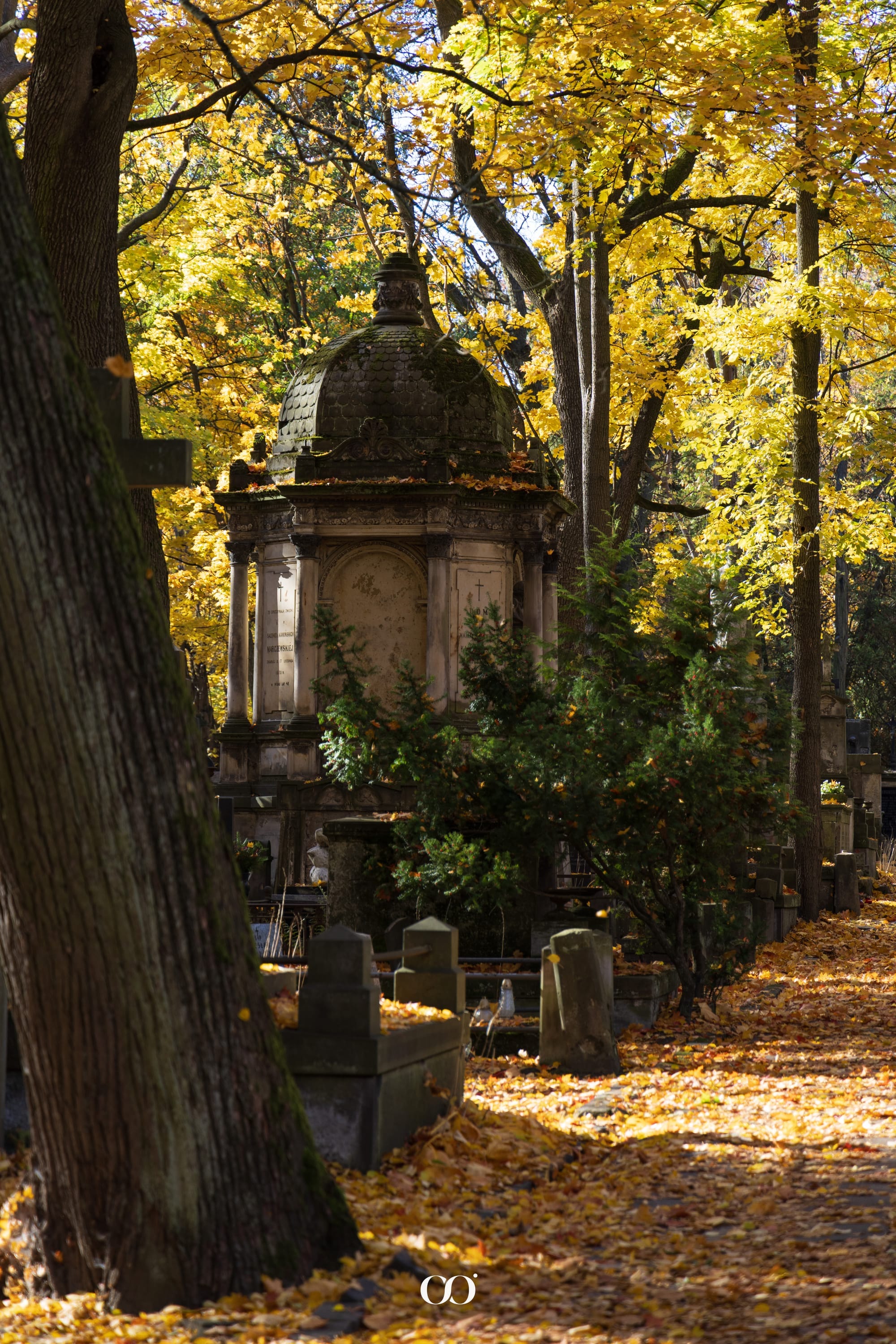
I remember the moment I watched Coco — the animated film inspired by Mexico’s Day of the Dead (Día de los Muertos). It’s a story about life, memory, and music — a colorful ritual where families welcome back the souls of their loved ones with flowers, candles, and marigolds. The belief behind it is simple yet profound: those who are remembered never truly die.
Beyond the vivid imagery, it’s a deeply human story — about a boy who dreams of becoming a musician and, through his journey, discovers the meaning of family and tradition. It’s hard not to be moved by it.
It’s a day when cemeteries in Warsaw and across Poland turn into glowing landscapes — millions of small flames flickering through the cold autumn air, transforming the evening into something quietly magnificent.

In Poland, All Saints’ Day (1 November) carries the same essence, but the tone is slightly different. Instead of festivals, there’s silence; instead of music — candlelight. It’s a day when cemeteries in Warsaw and across Poland turn into glowing landscapes — millions of small flames flickering through the cold autumn air, transforming the evening into something quietly magnificent.
While Mexico celebrates through joy, Poland remembers through calm and reflection. Yet both share one truth: memory is a form of presence.
All Saints’ Day in Poland — a tradition of light and memory
All Saints’ Day (Wszystkich Świętych) and the following All Souls’ Day (Dzień Zaduszny) are important dates in Polish culture. Families visit cemeteries to clean graves, bring chrysanthemums and candles, and pay respect to loved ones who have passed away — gestures that unite generations.
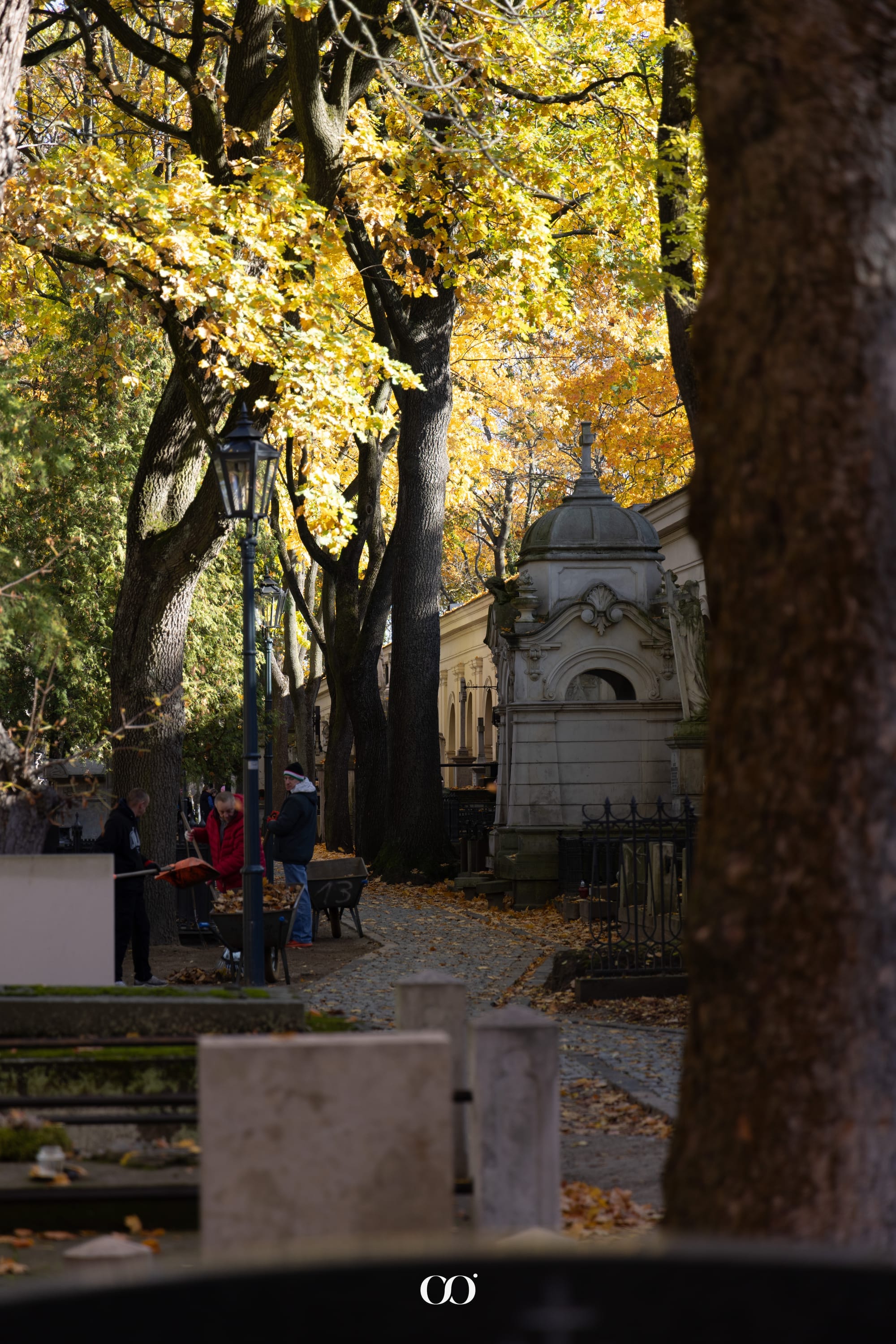

Powązki Cemetery (Stare Powązki) in Warsaw, 2025. Photo: Warsawslook
Spanning an area comparable to Vatican City, Powązki Cemetery (Stare Powązki) is one of Poland’s oldest and most beautiful burial grounds. Founded in 1790, it holds over a million burials...
In Warsaw, visiting the cemetery isn’t seen as a somber duty but as an act of belonging. Streets fill with people carrying flowers and lanterns; trams and buses run more frequently toward Powązki Cemetery, Cmentarz Wojskowy, and others. The city feels suspended between silence and light.
Visiting Powązki Cemetery in Warsaw

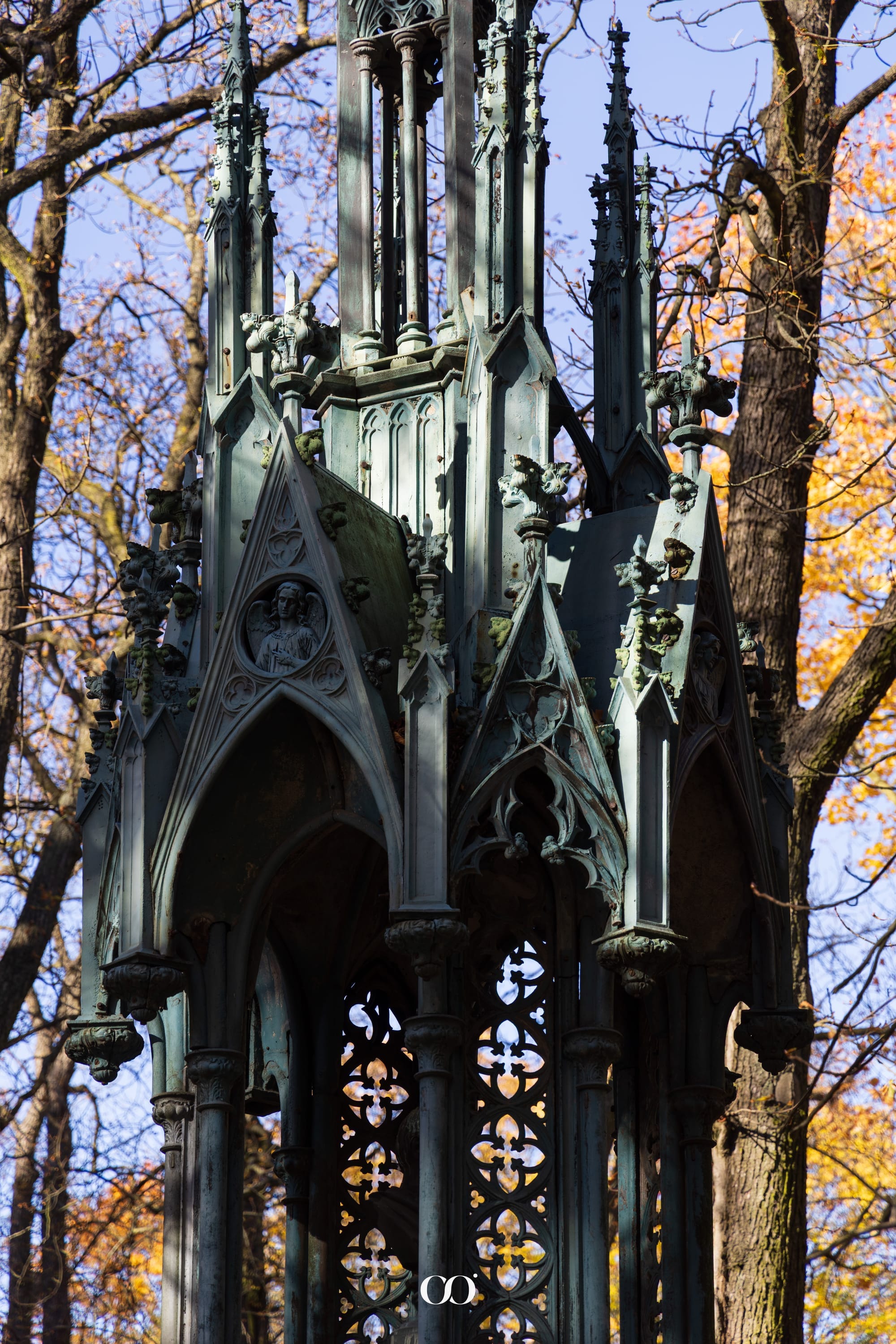
Powązki Cemetery (Stare Powązki) in Warsaw, 2025. Photo: Warsawslook
Spanning an area comparable to Vatican City, Powązki Cemetery (Stare Powązki) is one of Poland’s oldest and most beautiful burial grounds. Founded in 1790, it holds over a million burials — poets, artists, and scientists among them. Originally on the city’s outskirts, today it stands in the heart of Warsaw — both geographically and symbolically.
Every 1 November, Powązki transforms into a living sculpture garden. Thousands of candles illuminate its historic alleys, reflecting off Art Nouveau and neoclassical tombs. The effect is magical — a blend of art, architecture, and remembrance. There’s even a mobile app to help locate notable graves, turning a walk through the cemetery into an intimate journey through Polish history and culture.
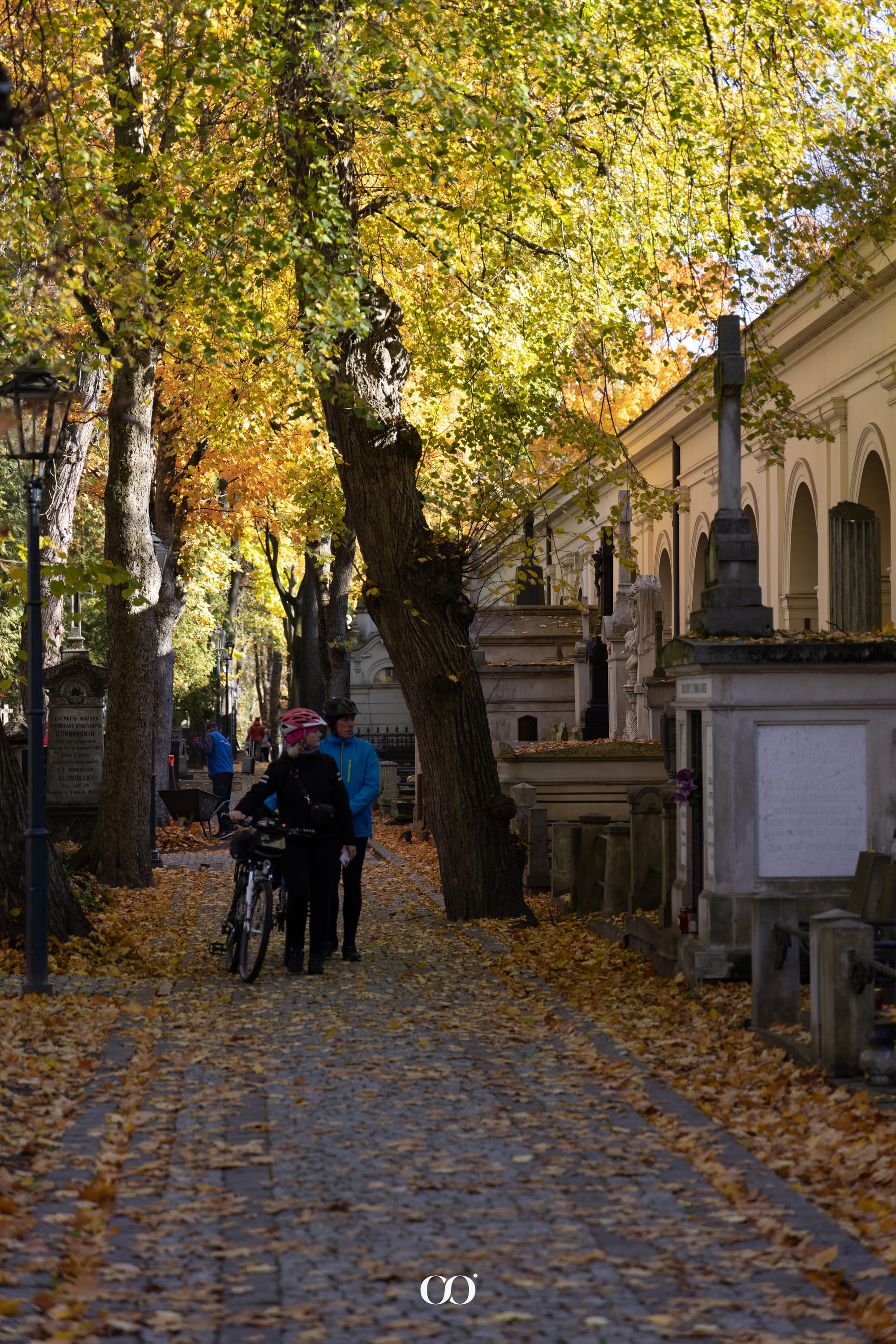
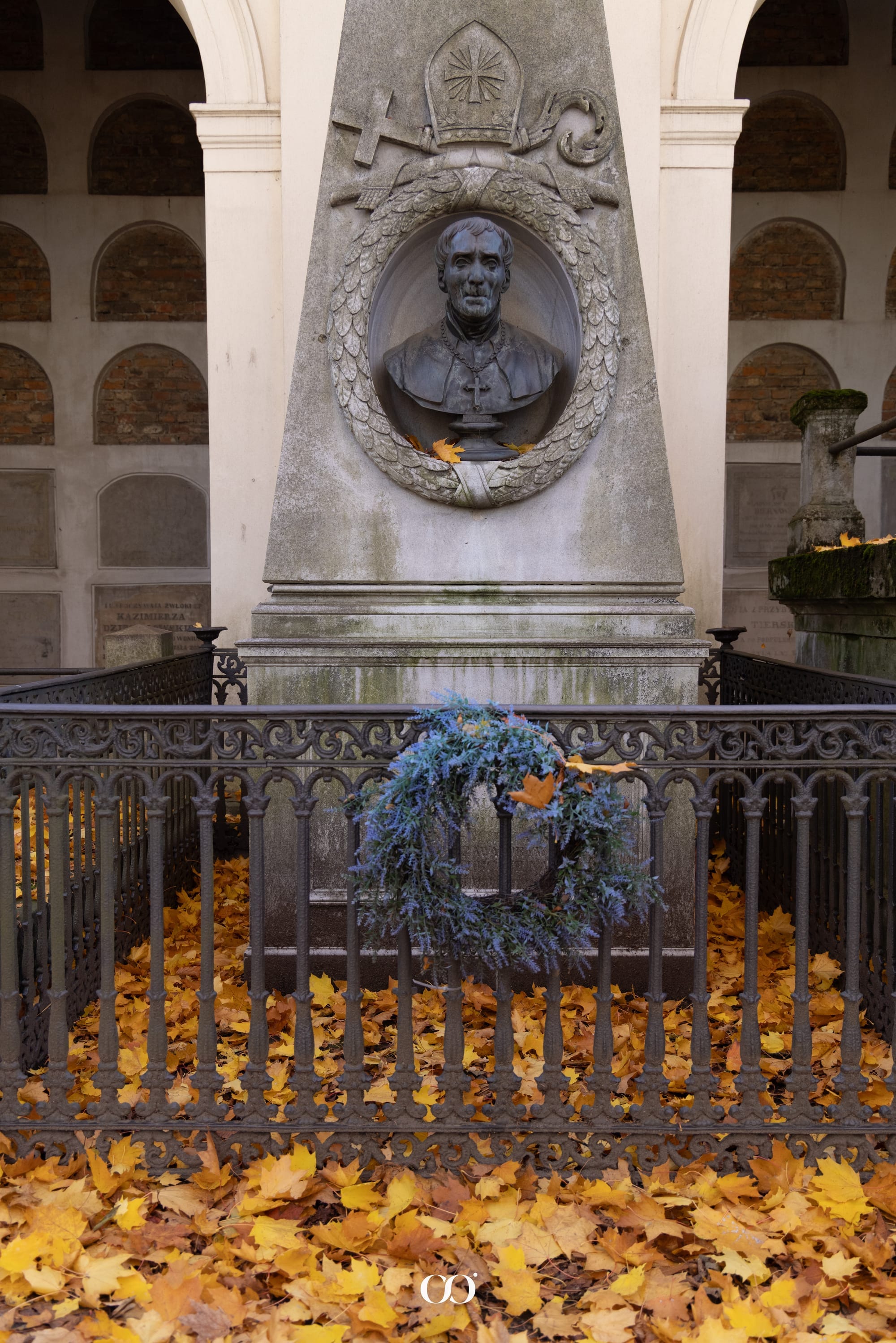

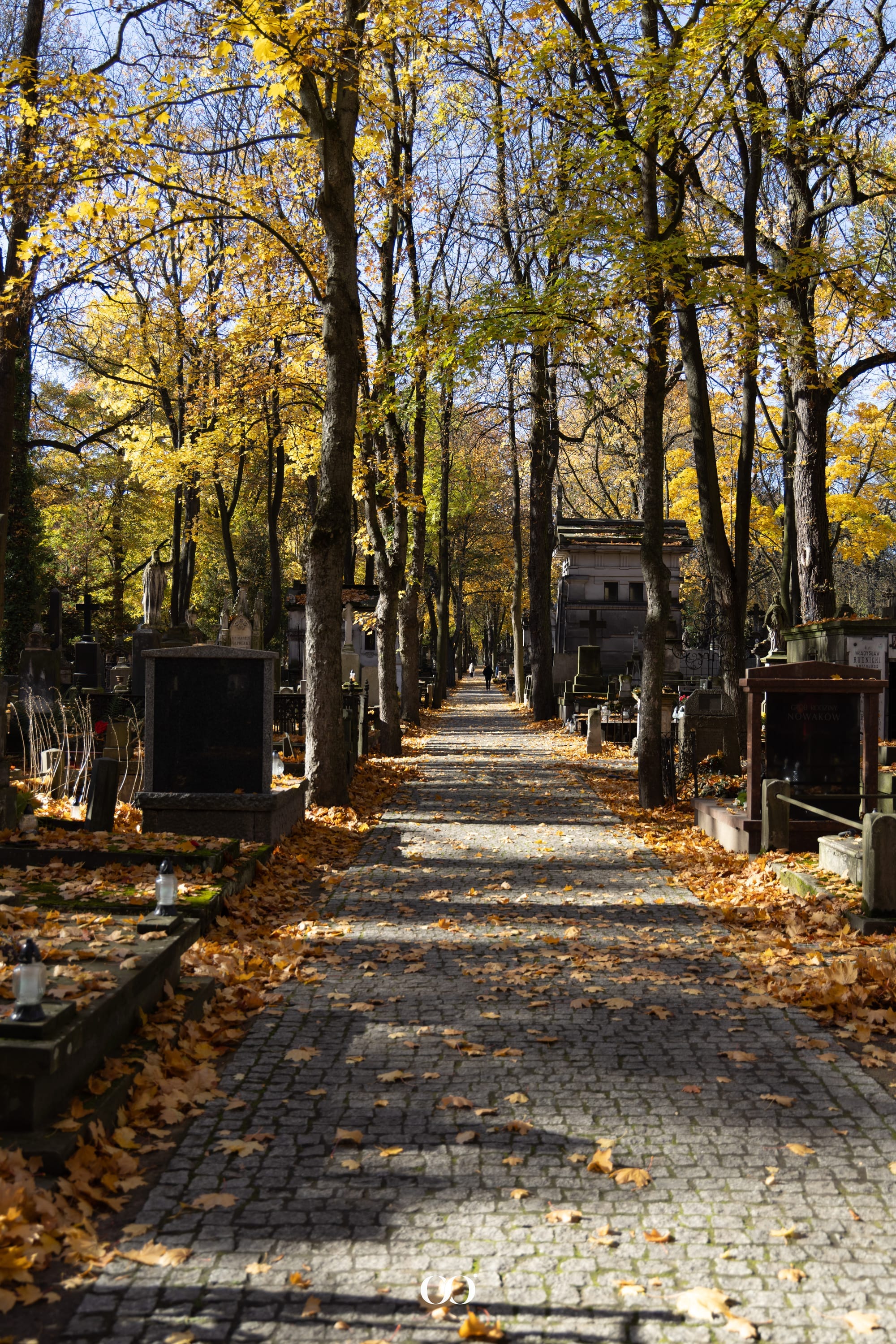
Powązki Cemetery (Stare Powązki) in Warsaw, 2025. Photo: Warsawslook
The Military Cemetery (Cmentarz Wojskowy na Powązkach)
In close connection with Powązki lies the Military Cemetery, established in 1912. Here, rows of identical crosses mark the graves of soldiers, insurgents, and victims of political repression. It’s also the resting place of many modern Polish figures — artists, journalists, and public personalities. The simplicity of the cemetery — its rhythmic symmetry and long alleys — speaks of shared memory. This is where Warsaw’s history breathes persistently.
Go before dusk, when the light begins to fade and families start arriving. Walk without hurry — let the hum of candles and quiet voices guide you.

Other cemeteries worth visiting in Warsaw
If you’re looking for quieter places to experience All Saints’ Day in Warsaw, several other cemeteries reveal the same spirit of remembrance.
Bródno Cemetery (Cmentarz Bródnowski) — one of the largest cemeteries in Europe, stretching endlessly eastward.
Wola Cemetery (Cmentarz Wolski) — centrally located and intimate, where ivy and silence wrap around old stones.
Palmiry Cemetery and Museum (Muzeum – Miejsce Pamięci Palmiry) — located just outside Warsaw, this forest memorial honors victims of World War II. The museum opened in 2011.

Experiencing All Saints’ Day in Warsaw
If you’re in Warsaw on November 1, don’t miss it. Go before dusk, when the light begins to fade and families start arriving. Walk without hurry — let the hum of candles and quiet voices guide you.
Whether you find yourself among the grand alleys of Powązki Cemetery or the soft paths of Wola Cemetery, you’ll discover something essential about this city: that remembrance, here, isn’t just a tradition — it’s a language.





